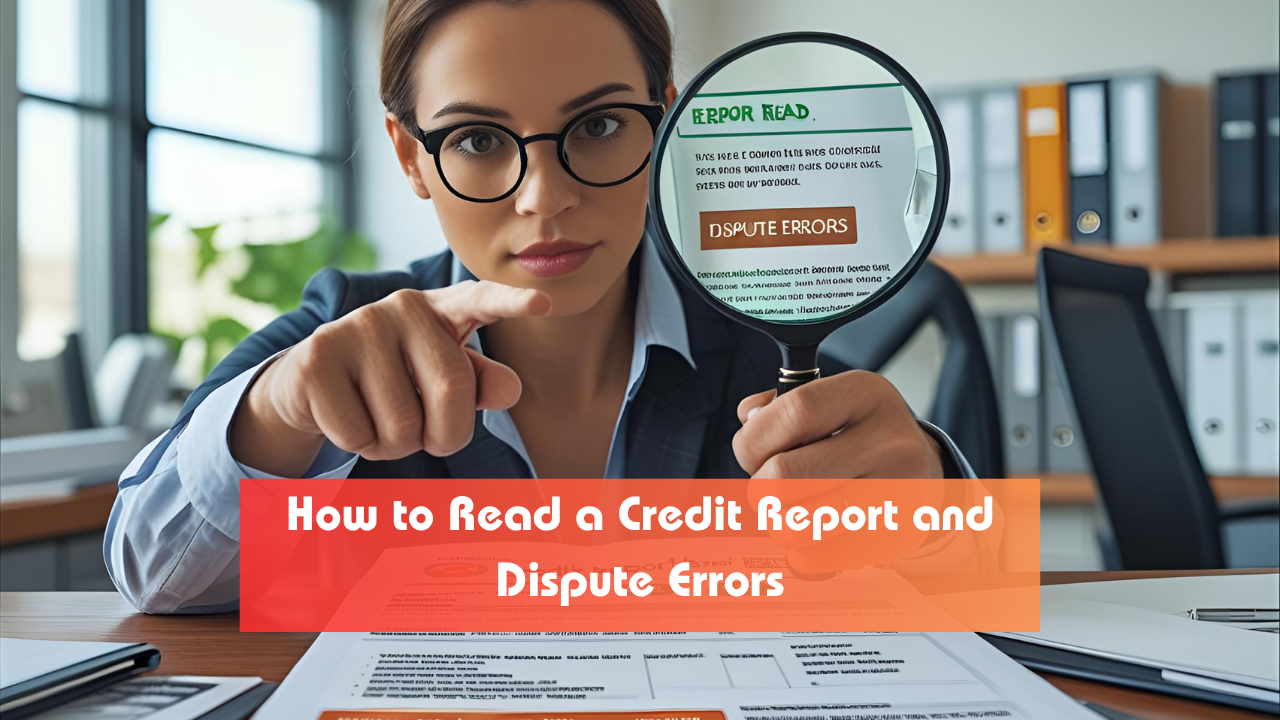Your credit report is a critical tool in managing your financial health. It affects your ability to borrow, the interest rates you receive, and even your chances of renting a home or getting a job. However, credit reports can sometimes contain errors that negatively impact your score—making it essential to review and understand them regularly.
In this guide, we’ll walk you through how to read your credit report, identify inaccuracies, and take the right steps to dispute any errors effectively.
Table of Contents
- Why Checking Your Credit Report Matters
- How to Get a Free Credit Report
- Sections of a Credit Report Explained
- Common Credit Report Errors to Watch For
- How to Dispute Credit Report Errors
- Sample Table: What to Look for in Each Section
- Final Thoughts
Why Checking Your Credit Report Matters
Regularly reviewing your credit report helps you:
- Catch identity theft early
- Monitor your credit activity
- Correct mistakes that could hurt your credit score
- Prepare for major financial decisions like buying a home or car
Under U.S. law, you’re entitled to one free credit report every 12 months from each of the three major credit bureaus.
How to Get a Free Credit Report
Visit AnnualCreditReport.com—the only official website authorized by federal law—to get your free reports from:
- Equifax
- Experian
- TransUnion
You can request all three at once or space them out throughout the year.
Sections of a Credit Report Explained
A credit report is divided into key areas. Understanding each section will help you spot discrepancies faster.
| Section | What It Includes |
|---|---|
| Personal Information | Name, address history, date of birth, and employment info |
| Credit Accounts | Current and past credit cards, loans, mortgages, with payment history |
| Public Records | Bankruptcies, judgments, and tax liens (if applicable) |
| Inquiries | List of who has checked your credit (soft or hard pulls) |
| Collections | Accounts sent to collections (from unpaid bills or debts) |
Common Credit Report Errors to Watch For
Credit report mistakes are more common than you might think. Look out for:
- Misspelled name or incorrect Social Security number
- Wrong account status (e.g., listed as delinquent when it’s current)
- Duplicate accounts or accounts that don’t belong to you
- Outdated information (e.g., debts paid off still marked as unpaid)
- Incorrect balance or credit limit
Any of these errors can lower your credit score, making loans and credit more expensive—or even unavailable.
How to Dispute Credit Report Errors
If you spot an error, act quickly. Follow these steps:
1. Gather Documentation
Collect records such as bank statements, payment confirmations, or loan documents that support your dispute.
2. File a Dispute Online or by Mail
Each credit bureau has its own process:
- Equifax: equifax.com/personal/credit-report-services/
- Experian: experian.com/disputes
- TransUnion: transunion.com/credit-disputes
3. Explain the Issue Clearly
Describe what the error is and why it’s incorrect. Attach supporting documents if filing by mail.
4. Wait for the Investigation
The credit bureau typically investigates within 30 days and notifies you of the outcome.
Sample Table: What to Look for in Each Section
| Credit Report Section | Details to Check | Potential Errors |
|---|---|---|
| Personal Information | Full name, addresses, SSN | Wrong name, outdated address, typo in SSN |
| Credit Accounts | Loan types, balances, payment history | Incorrect balances, late payments, duplicates |
| Inquiries | Credit checks from lenders | Unauthorized hard inquiries |
| Collections | Outstanding debts, collection agencies | Paid debts still marked as owed |
| Public Records | Bankruptcies, liens | Expired or dismissed records listed |
Final Thoughts
Knowing how to read and correct your credit report puts you in control of your financial future. Errors, even small ones, can cost you in the form of higher interest rates or denied applications. By reviewing your report regularly and disputing inaccuracies promptly, you protect both your credit score and your financial reputation.
Start by getting your free report at AnnualCreditReport.com and take the first step toward accurate, clean credit records.

